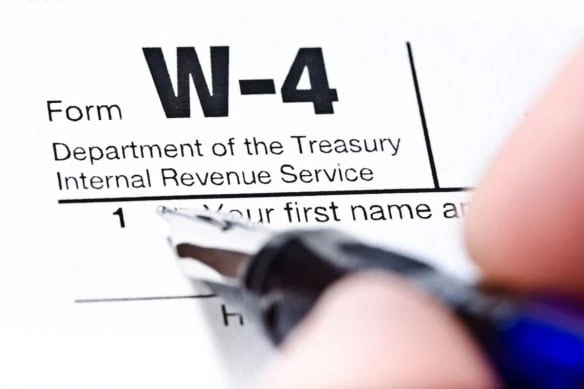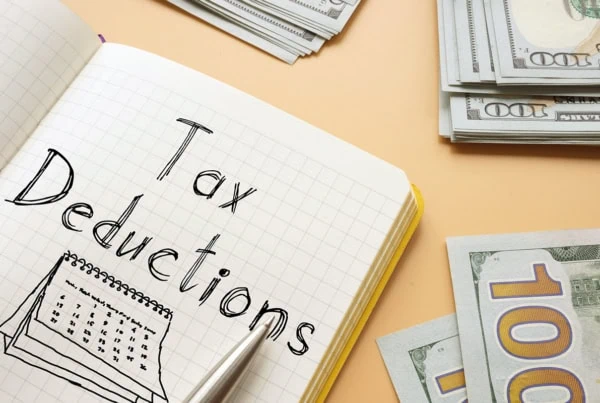Even though you only have to file a federal income tax return once per year, you generally must make tax payments to the IRS periodically during the year. If you work for someone else, it’s easy: Your employer will withhold income taxes from your paycheck and send that money to the IRS to satisfy this requirement.
But what if the amount withheld from your pay isn’t quite right?
If too much tax is withheld, you’ll get a refund when you file your tax return. However, that also means each paycheck is smaller than it could be, and you’re essentially giving the IRS an interest-free loan. However, if not enough tax is withheld, you’ll have to pay the IRS the difference when you file your return. You might also have to pay IRS penalties and interest.
Ideally, the amount of federal income tax withheld from your paychecks during the year will come close to the amount of tax you’ll owe for the year. That way, you’ll either get a small refund or only pay a small amount. But if it looks like that’s not going to happen, it’s easy to adjust your withholding to get back on track.
Read on to see when you might want to fix your withholding—and how to do it. I’ll also cover other important aspects of tax withholding that might help you plan ahead for your next tax return.
When Should You Adjust Your Tax Withholding?
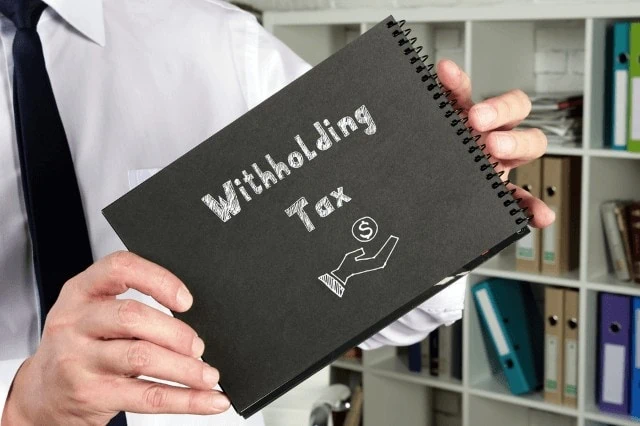
You shouldn’t fall into the “set it and forget it” trap when it comes to federal income tax withholding. But how do you know when it’s time to make a change?
Here are eight common situations where it might make sense to adjust your withholding:
- Getting a big tax refund. Some people think getting a big refund is a good thing. But that’s not necessarily true. It just means your employer withheld more tax from your paychecks than necessary. The IRS doesn’t pay you interest on any extra money it collects through withholding (i.e., on your refund), so having too much withheld from your wages is like giving Uncle Sam an interest-free loan each pay period. You can fix this problem by reducing the amount withheld from your pay. That will also make each paycheck a bit bigger—so it’s like giving yourself a raise.
- Paying a big tax bill. It’s no fun digging deep into your pocket to pay a large tax bill when you file your return. If this happens to you, it might be because you didn’t have enough tax withheld during the year. To avoid the same problem when you file your next return, increase the amount of tax withheld by your employer. This can help you dodge IRS penalties and interest, too.
- Getting married (or divorced). If your marital status changes, your taxes are likely to change, too. That’s largely because your filing status changes if you get married or divorced. And because your withholding is partially based on your filing status, it’s a good idea to adjust your withholding if your filing status changes for any reason.
- Having a baby. Children are expensive—but they can also generate some significant tax savings. The child tax credit alone is worth up to $2,000 per child. So, when you have a baby (or adopt a child), the amount of tax you owe might very well go down. If that’s the case, you can also reduce your tax withholding to account for the lower tax bill. (When your children grow up and you’re no longer eligible for any child-related tax breaks, you’ll want to adjust your withholding again.)
- Buying a home. There are a number of tax breaks available to homeowners, such as deductions for mortgage interest and property taxes. These tax benefits can have a significant impact on your federal income tax bill. So, if you go from being a renter to being a homeowner, you might want to tweak your tax withholding to account for any home-related tax savings.
- Starting a side gig. If you start a side job and taxes aren’t withheld from your income (e.g., you’re a freelancer or other type of independent contractor), you should consider adjusting the withholding from your “regular” paycheck. By factoring in the income from your side gig, your primary employer can withhold additional taxes from your wages to help cover what you’ll owe on your side income. (Adjust your withholding again if you quit your side job.)
- Spouse getting a job. As your family income increases, so does your tax rate. So, if you’re married and filing a joint return, and both you and your spouse are employed, you’ll likely owe more tax than if only one of you had a job. As a result, you should consider adjusting your withholding if you go from a one- to a two-income family. (And adjust it again if you go back to a one-income family.)
- Receiving non-wage income. If you receive a lot of interest, dividends, capital gains, retirement account withdrawals, or other non-wage income during the year, you might want to adjust your withholding. These types of income are generally taxable, but taxes typically aren’t withheld when they’re paid to you. By increasing your paycheck withholding, you can account for the additional taxes you’ll owe for the extra income.
Do you want to get serious about saving and planning for retirement? Sign up for Retire With Riley, Young and the Invested’s free retirement planning newsletter.
How Do You Adjust Your Tax Withholding?

Adjusting your federal income tax withholding is easy. All you have to do is fill out a new Form W-4 and give it to your employer. The information you provide on a W-4 form will be used to calculate the amount of tax to be withheld from each paycheck. If you have more than one job, you should submit a separate W-4 form for each job to get the most accurate overall withholding.
There are five “steps” to filling out a W-4 form, but you might not have to complete all of them. You can also use the IRS’s Withholding Tax Estimator to help you complete the form.
Step 1: Enter Personal Information. Everyone must complete Step 1, which is to provide your name, address, Social Security number, and the filing status you expect to use on your next tax return.
Step 2: Multiple Jobs or Spouse Works. This step is only required if (1) you hold more than one job at a time, or (2) you expect to file a joint return and your spouse also works. There are three ways to complete Step 2. You can generally pick any method, although you should pick the first option (using the IRS Withholding Tax Estimator) if you or your spouse have self-employment income.
Step 3: Claim Dependent and Other Credits. If you expect to claim any tax credits—such as the child tax credit or credit for other dependents—on your next tax return, complete Step 3 so that your withholding can be reduced to account for the credits’ impact on your tax bill.
Step 4: Other Adjustments. Complete this step if you want to:
- Increase your withholding to cover taxes owed on non-wage income
- Reduce your withholding to account for tax deductions you expect to claim (other than the standard deduction)
- Increase your withholding for any other reason (e.g., to generate a larger tax refund)
Step 5: Signature and Date. You must sign and date the form in this step. By signing, you declare, under penalties of perjury, that as far as you know the information on the form is true, correct, and complete.
Related: Federal Tax Brackets and Rates
When Are You Required to File a W-4 Form?

The only time you’re required to complete a W-4 form is when you start a new job. If you don’t provide your employer with a properly completed form at that time, your withholding will be calculated as if you’re a single person with no adjustments (e.g., for multiple jobs, credits, deductions, non-wage income, etc.).
Once you start your job, you can submit a new W-4 form any time you want. However, if you want, you can stick with your original W-4 if the right amount of tax is being withheld and there are no changes to your financial or personal situation that might require an adjustment.
In any event, it’s wise to check your withholding each year to make sure it’s still correct. The IRS Withholding Tax Estimator can help make sure your withholding is on track. If possible, you should review your withholding earlier in the year. That way, you can spread out any necessary adjustments over a longer period of time. However, you can adjust your withholding at any point in the year if you don’t think of it earlier or your financial or personal situation changes later in the year.
Related: What’s the $10,000 SALT Deduction Cap [And Will It Change]?
Estimated Tax Payments Instead of Withholding
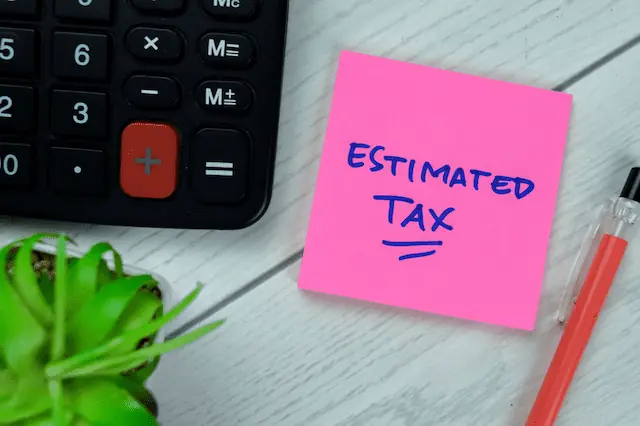
If you have self-employment income from a side gig, or non-wage income that’s not subject to withholding, you can make estimated tax payments to cover the taxes on that income instead of adjusting the withholding from your paycheck.
If you go this route, you generally have to make four payments during the year. The estimated tax due dates are typically Jan. 15, April 15, June 15, and Sept. 15. However, if a due date falls on a weekend or holiday, the payment is due on the next business day.
Estimated tax payments generally aren’t required for self-employment or non-wage income if you expect to owe less than $1,000 in tax for the year after subtracting any withholding and tax credits. They’re also not necessary if you expect your withholding and tax credits for the year to be less than the smaller of:
- 90% of your tax liability for the current year
- 100% of your tax liability for the previous year (110% for certain higher-income people)
Related: 11 Ways to Avoid Taxes on Social Security Benefits
Penalties and Interest If Too Little Tax Is Withheld

If you don’t pay enough tax during the year—either through withholding or estimated tax payments—you might have to pay a penalty. How much your penalty will be depends on the:
- Amount of your underpayment
- Period when the tax was due and underpaid
- Quarterly IRS interest rates for underpayments
On the bright side, you won’t have to pay a penalty if either:
- You owe less than $1,000 of federal income tax for the year
- You paid at least 90% of the tax due for the current year, or 100% of the tax due for the previous year (110% for certain higher-income taxpayers), whichever amount is less
The IRS also charges interest on the penalty until it’s paid in full.
Related: 8 Special Tax Breaks for Senior Citizens
Exemptions From Tax Withholding

Withholding isn’t required for every worker. You can claim an exemption from federal income tax withholding if both of the following are true:
- You had no tax liability for the previous year.
- You expect to have no tax liability for the current year.
If you qualify, you still must submit a W-4 form to claim the exemption. Complete Steps 1 (name and Social Security number only) and 5, and write “Exempt” in the space below Step 4(c).
The exemption only applies for one year. If you want to claim it again, you have to file another W-4 form next year, too. (For 2026 exemptions, you must submit a new form by Feb. 17, 2026.)
Just remember: If you claim an exemption, you won’t have any income tax withheld from your paycheck. If you end up owing tax, you might also be hit with a penalty when you file your return for the year.
Do you want to get serious about saving and planning for retirement? Sign up for Retire With Riley, Young and the Invested’s free retirement planning newsletter.
Can You Adjust Payroll Tax Withholding?
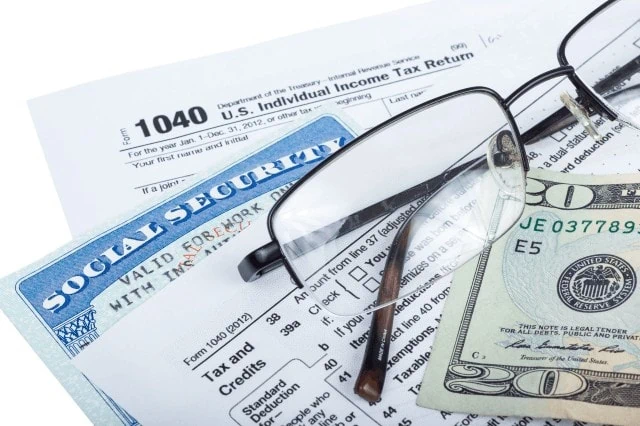
Income taxes aren’t the only taxes your employer collects for the federal government. Take a look at your paystub and you’ll notice deductions for other taxes that fund the Social Security and Medicare programs.
Young and the Invested Tip: Social Security and Medicare taxes could be listed as FICA SS, OASDI, FICA Med, or some other abbreviated term on your paystub. “FICA” stands for Federal Insurance Contributions Act, which is the legislation authorizing these taxes. “OASDI” stands for Old-Age, Survivors and Disability Insurance, which is the formal name for Social Security.
The Social Security tax you pay is generally equal to 6.2% of your wages, while your Medicare tax equals 1.45% of your pay—for a combined total of 7.65%. Your employer pays the same amount. So, between the tax you pay and the portion paid by your employer, the federal government typically gets a grand total of 15.3% of your wages to fund Social Security and Medicare.
However, there’s a limit on wages subject to the Social Security tax. For 2025, there are no Social Security taxes on wages above $176,100 (the limit is adjusted for inflation each year).
There’s no such limit on Medicare taxes, though. In fact, employers must withhold a 0.9% additional Medicare tax from a worker’s wages exceeding $200,000 for the year.
Unfortunately, an employee can’t control any of these payroll tax deductions. Unlike federal income tax withholding, there’s no way to adjust withholding for these taxes.
Related: All Tax Due Dates for the Year
State Income Tax Withholding

Unless you live in a state with no income tax, your employer will likely withhold state (and possibly local) income taxes from your paycheck, too.
Most states have their own version of the federal Form W-4; however, their use isn’t always required. So, when you start a new job, you might have to fill out a separate form that’s used to calculate your state income tax withholding.
If and how you can adjust your state tax withholding, whether an exemption is allowed, penalties for insufficient withholding, and other withholding-related rules vary from state to state. Check with the state tax agency where you live for more information about state and local income tax withholding from your paycheck.
Related: States That Tax Social Security Benefits
- “Can I retire yet?” Stop guessing. Start planning.
- Subscribe to Retire With Riley: a FREE weekly retirement planning newsletter.
- Riley Adams, CPA, is a financial advisor who can help you turn retirement dreams into reality.
- Written by Riley Adams, CPA, a fiduciary financial advisor
- Edited by Kyle Woodley, Editor-in-Chief of YATI Media, LLC, former Senior Investing Editor, Kiplinger.com and Managing Editor, InvestorPlace
- Free retirement planning information
- Covers a broad range of topics with expert insights, data, and details
- Weekly, digestible email written in accessible language
Copyright © 2025 by Rocky Mengle. All rights reserved. Used with permission.




